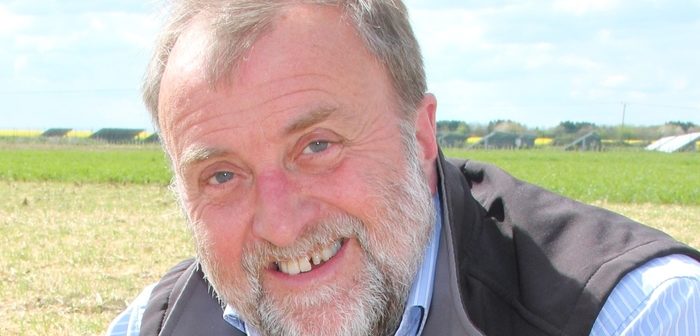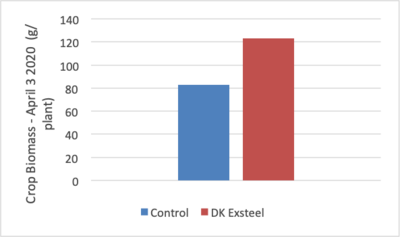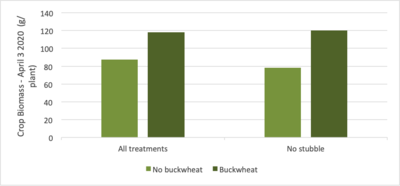Two years of Essex farm trials on difficult heavy ground under intense cabbage stem flea beetle pressure show that if you only do two things to combat the pest this autumn they should be sowing a fast-developing variety and giving it some decent early surface protection – either with a long stubble, a buckwheat companion or both.
Part of Agrii’s extensive CSFB management research programme over the past 11 years, the replicated small plot and large-scale tramline trials at Langley Lawn Farm near Saffron Walden reinforce remarkably similar results from a number of other trial sites – including Throws Farm, AgriiFocus on the Marlborough Downs, Chilsedon in Wiltshire and Saxby Cliffe in Lincolnshire.
“Reducing the attractiveness of the crop as it emerges and getting it to put on leaves as rapidly as possible afterwards have consistently been the stand out keys to minimising the impact of flea beetle in our work,” stresses trials manager, Steve Corbett. “In many cases this season they have been the difference between taking a decent crop through to harvest and complete crop loss.
“Our experience shows there are a number of important fundamentals in managing the CSFB threat. Not least, only sowing when you have sufficient moisture, minimising soil disturbance at drilling, using a specialist starter fertiliser and timely, early spraying.
“There will be occasions – when pest pressures are especially intense or soils particularly dry, for instance – when your best course of action is not to sow oilseed rape. Other than these, though, our work shows that minimising the green-on-brown flea beetle appeal of the newly-planted crop and growing rapidly-developing varieties will provide the basis for a very effective flea beetle defence.”
As well as the normal assessments of adult and larval damage, crop biomass measurements in early April across Agrii’s Langley flea beetle management trials highlighted the particular success of this approach.
Averaged across stubble heights and buckwheat companion cropping, fast-developing hybrid, DK Exsteel delivered a biomass 49% greater than the high output conventional variety control with a much better-branched and more even canopy (Figure 1).
Drilling into a decent stubble – albeit only spring barley in this instance – rather than lightly cultivated ground gave an average 7% advantage in spring biomass across all the treatments. In the absence of buckwheat, however, this difference was 20% (Figure 2).
Equally, while the average advantage of a buckwheat companion overall was 35%, this increased to 53% where there was no stubble (Figure 3).
Markedly lower levels of stem scarring from stubble versus no stubble and buckwheat versus no buckwheat, and the lowest level of scarring overall from the combination of both underlined their value in reducing flea beetle damage.
“A decent stubble and the right companion helped shelter the OSR from adult grazing flea beetle,” notes Mr Corbett. “Even so, we recorded significant shot-holing across the Langley treatments. This meant a rapid-developing hybrid best able to grow away from grazing in the autumn and tolerate larval damage in the spring was equally important. “What’s more, we saw an extra advantage from the buckwheat – almost certainly from its phosphate-mining capability – in enabling the better compensating hybrid, in particular, to shrug-off larval damage come the spring. So, it’s clearly a valuable addition regardless of stubble height.”
Altogether, the April biomass difference between DK Exsteel sown into a decent stubble with buckwheat over the conventional variety sown into cultivated ground without the companion was fully 150%. And this despite a much higher seed rate with the control.
Mr Corbett is confident the differences in crop size, structure and podding so obvious here going into the summer will be reflected in harvest yields.
He stresses that the continued success of OSR-growing at Langley Lawn Farm owes much to the whole team’s dedication to the job. As well as ensuring the best possible soil structure for the crop, they apply digestate ahead of drilling, sow at well-controlled seed rates and use a specialist starter fertiliser. They also employ autumn metconazole wherever necessary for the best canopy structuring, balance nutrition carefully with regular tissue testing and start their fertilisation as early as they can in the spring.
“All these elements are important in ensuring oilseed rape continues to deliver despite the extra challenges it faces these days,” he concludes. “But, as our trial work clearly shows, the right approach to variety choice, stubble height and companion cropping are fundamental in dealing with the crop’s single biggest challenge.”







